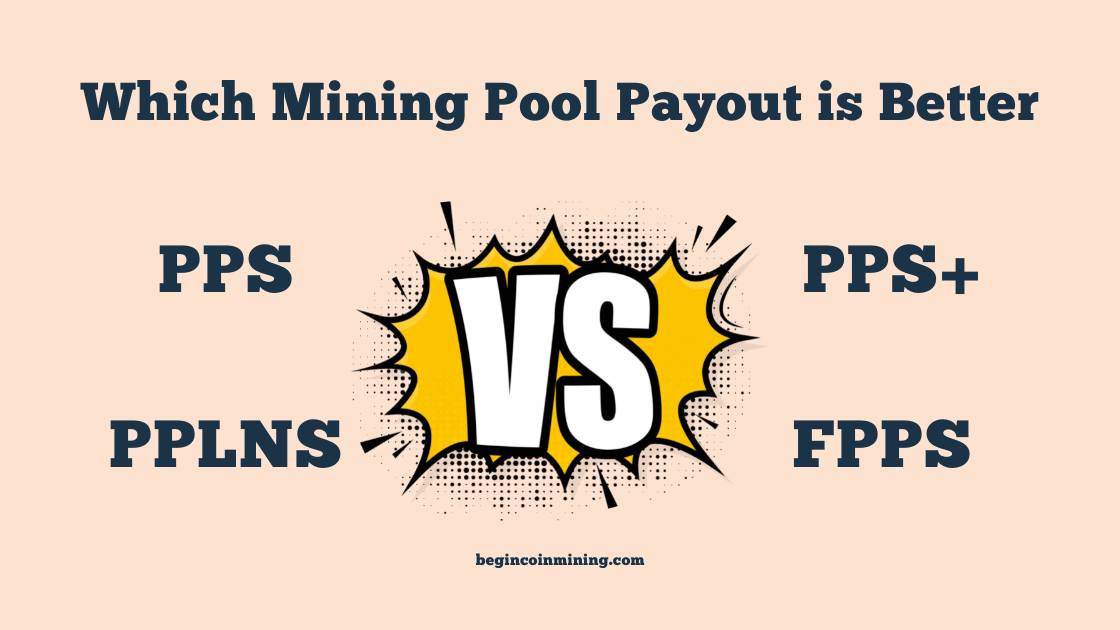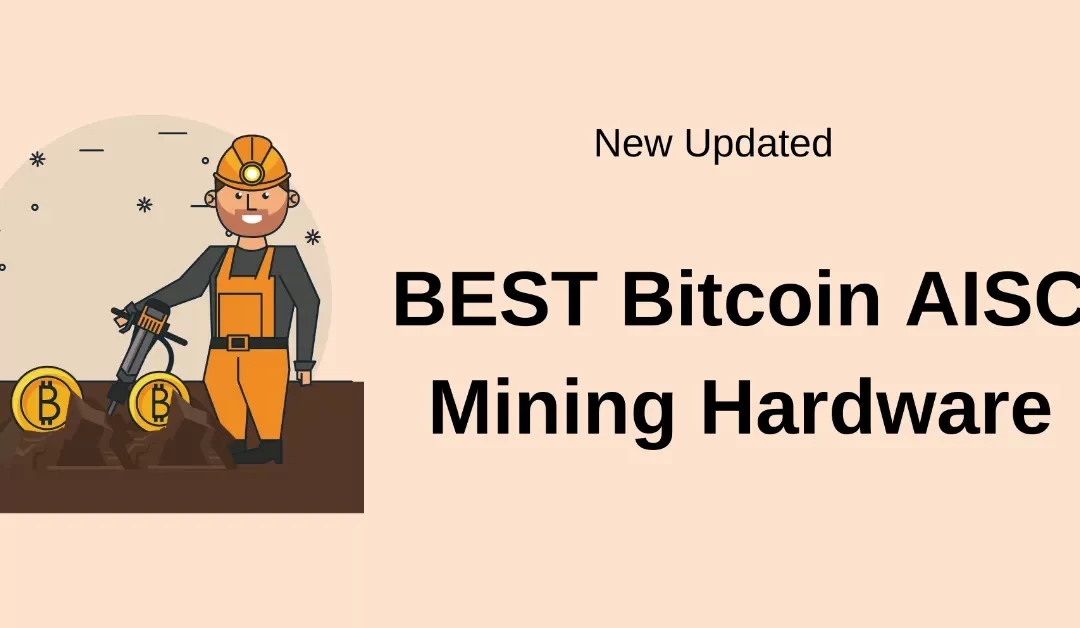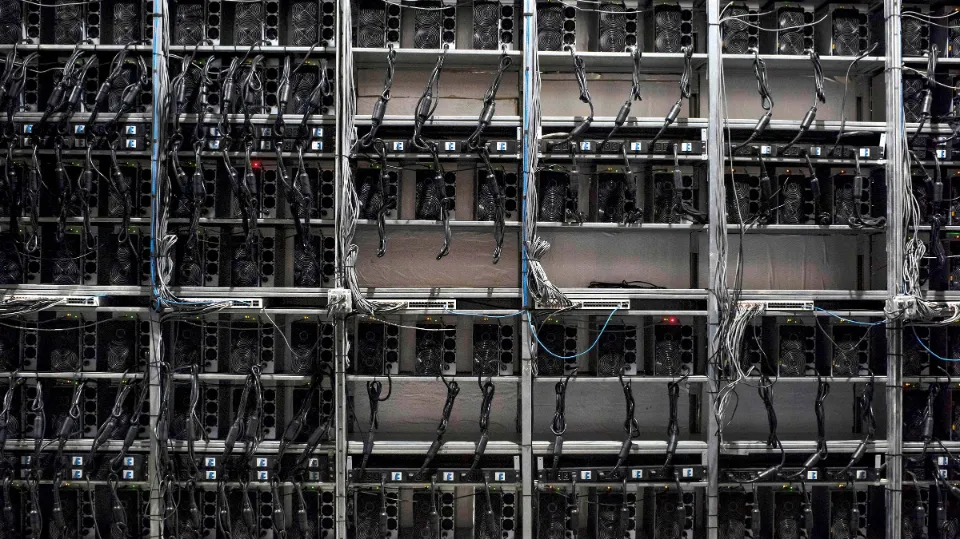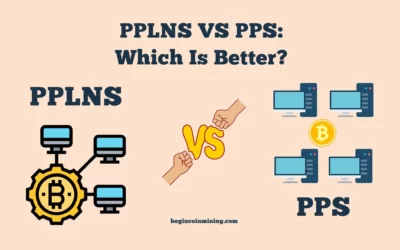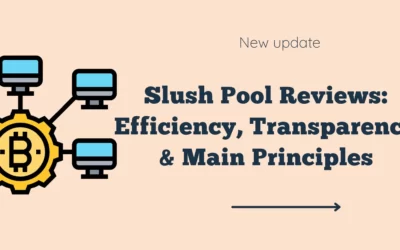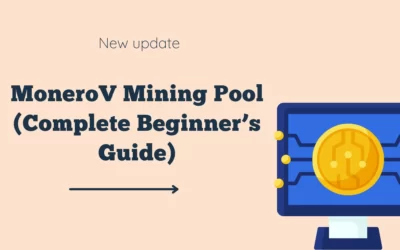Take a look at the difference between PPS vs FPLNS vs PPLNS vs PPS+ and how they could affect your profits to make a better decision on your mining pool plan.
There are many different payment methods available, but we are going to throw some light on the most common ones:
- FPPS is generally preferred by miners (holding all else equal) given they do not have to take on the additional risk of variance (luck).
- PPS+ is a hybrid of PPS and PPLNS, which usually acceptable if the mining pool is large enough that it finds blocks consistently.
- FPPS is the riskiest for a pool operator so it usually comes with a slightly higher fee.
- PPLNS pools have little to no risk for the pool operator so can have very low fees.
Users must first understand the cryptocurrency’s profit-making mechanisms before they can comprehend these settlements. Block rewards, which are currently 6.25 bitcoin per block, and mining fees/transaction fees make up the majority of the mining profit. You can more accurately comprehend these settlements once you are familiar with the profit components.
The vast majority of the mining pools operate on a PPS, FPPS, PPS+, and PPLNS basis. Make sure you check what kind of reward system your pool has in place.
Now tell me what PPS, FPPS, PPLNS, and PPS+ are..? Before we jump into it let’s define a few terms:
Key Terms
Block Reward – The phrase “block reward” merely refers to the fresh coins that the network distributes to miners for each successfully solved block. In Bitcoin, the miner who locates a block successfully receives 6.25 BTC in exchange for their work. As we get closer to the BTC cap, this number starts to drop.
Transaction Fees – Similar to Bitcoin, some networks reward their miners with sizable amounts of transaction fees. These costs represent the total of what users of Bitcoin have to pay to complete transactions. This was roughly equivalent to 3.4 percent of the block reward in December 2019, but by May 2020, it had risen to over 10%.
Hashing Power – What a hash function produces is a hash. The hash rate measures how quickly a computer is working through an operation in the cryptocurrency’s code. As a result, the number of hashes is expressed in hashes per second. The probability of a miner discovering the following block and earning the block reward rises with increasing hashrate.
Luck – A mining pool’s luck is probabilistic in nature. Consider giving each miner a lottery ticket in exchange for the hashing power they contribute. One of ten lottery tickets would be awarded to you if you contributed 1 TH/s of hashing power and the network’s total hashing power was 10 TH/s. If you were to find the block reward, there is a 10% chance that you would win the lottery. Therefore, statistically speaking, there should be one block for every ten blocks discovered. Think about finding 2 out of the 10 blocks. This would indicate that you discovered a block earlier than you ordinarily should have, according to statistics. Consider finding 0 out of 10, and how fortunate you would be. You’d be unlucky as a result of this. There is short-term variance, but statistically speaking, over the long run, you should receive 1 out of 10 blocks (or 10%) on average.
Mining Pool- Overall, mining is the process of trying to unlock each block in order to obtain the reward that is contained within it; the more attempts (hashes) you can make per second, the greater your chances are of obtaining the reward (i.e. the more lottery tickets you have the higher your chance of winning the lottery). Since most miners lack the necessary hashing power to reliably find blocks on their own, they join a pool where their combined hash power is pooled to hash blocks. Block discovery is made simpler with more hashing power. A small fee is then paid to the pool operator, and the reward is then divided among the miners according to the amount of work they contributed.
For each share that is solved, PPS offers an immediate flat payout. For each share completed using this payment method, a miner receives a standard payout rate. A specific number of mineable bitcoins are represented by each share.
The miners are given a set daily income that is subtracted from the mining pool fees. As a result, under the PPS mode, the returns are generally consistent. Here, there is risk to the miners. They might lose out on the transaction fees.
It is perfect for long-term low-cost orders. During the bearish run of a specific coin, this model becomes profitable.
The variance makes this payment structure riskier for pool operators. Typically, only large pools with sizable reserves can afford to assume the variance risk.
For alt-coins, PPS is a very popular payout method, but not for Bitcoin, as is further explained below.
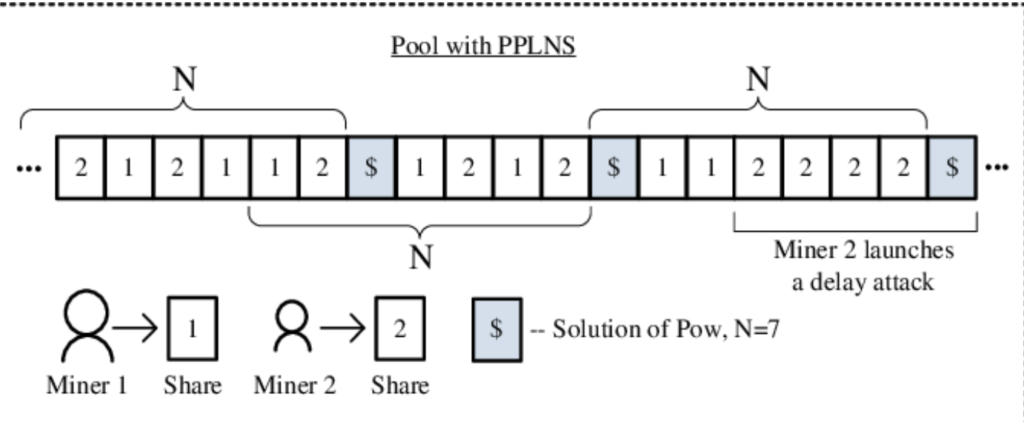
In this situation, profits will be distributed in accordance with the number of shares that miners contribute. The block mined out is closely related to this kind of allocation technique. The miners will make a lot of money if the mining pool excavates several blocks in a day; however, if only one block can be mined during the entire day, the miners will make no money at all.
Notably, the PPLNS model and a pool’s luck have a strong correlation over the short term. The miner’s income will also decrease if a specific mining pool’s short-term luck factor declines (although the reversal is also possible: a mining pool that experiences short-term luck). On the whole, luck tends to average out to the mean.
Due to the high likelihood of finding a block within the order time limit, this model is perfect for fixing orders on large pools. Or a regular order that keeps miners connected for a longer period of time
PPS+ combines PPS and PPLNS, the previously mentioned modes. The PPS model is used to settle the block reward. Additionally, the PPLNS mode is used to settle the mining service fee/transaction fee.
- Miners are paid by the pool for each valid share that they submit to the pool (whether or not the pool finds a block)
- Miners are also paid a portion of the transaction fees that their pool finds based on a PPLNS method (only when the pool finds a block)
With an additional transaction fee payment based on the PPLNS calculation method, the two together provide miners with the consistent and predictable block reward payments of PPS.
By using the PPLNS payment method, the miner can also earn a portion of the transaction fee in this mode. The PPS model had this as a significant flaw.
In this mode, the block reward and the mining service fee are both settled using the theoretical profit. In a predetermined timeframe, determine a standard transaction fee and distribute it to miners in proportion to their pooled hash power contributions. By splitting some of the transaction fees with the miners, it boosts their income.
- Miners are paid by the pool for each valid share that they submit to the pool (whether or not the pool finds a block)
- Miners are also paid the expected transaction fees of the network based on the past 24 hours(whether or not the pool finds a block)
You will be compensated using the PPS and FPPS payment methods whether or not the pool discovers a block. The most important benefit over PPLNS is this. The PPLNS plan has higher risks and rewards.
Which Method is the Best?
There are many different payment methods because they all have advantages. Given that they do not have to assume the additional risk of variance (luck) and they receive transaction fees, miners typically prefer FPPS (all other things being equal). Miners can choose between payment methods and fees (along with other factors like pool quality, community, support, UX, etc.) in FPPS pools, which frequently charge a higher fee than PPS or PPLNS pools.
- FPPS is generally preferred by miners (holding all else equal) given they do not have to take on the additional risk of variance (luck).
- PPS+ is a hybrid of PPS and PPLNS, which usually acceptable if the mining pool is large enough that it finds blocks consistently.
- FPPS is the riskiest for a pool operator so it usually comes with a slightly higher fee.
- PPLNS pools have little to no risk for the pool operator so can have very low fees.
FAQs
Is PPS+ Better Than PPLNS
With the PPS and FPPS payment methods, you will get paid no matter if the pool finds a block or not. In comparison to PPLNS, this is the biggest benefit. With the PPLNS plan, the risks and rewards are greater.
Is FPPS+ Better Than PPS?
FPPS is a suped-up version of PPS. On both the block reward and the transaction fees, it is PPS. Regardless of whether the pool discovers a block, miners are compensated by the pool for each valid share they submit to the pool.
What is the Best Bitcoin Mining Pool?
Here is a quick list of the best bitcoin mining pools available in the market:
Slush Pool – Best for ASIC miners with high hash rates
F2Pool – Best for merged mining 4 cryptos
AntPool – Best for remote management
Binance Pool – Best for reinvesting mining incomes
ViaBTC – Best for hash rate trading
BTC.com – Best for Bitcoin and Bitcoin cash mining.
Poolin – Best for diversified payment modes.
ECOS – Best for Its operating system
Genesis Mining – Best for beginners

